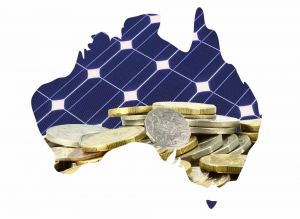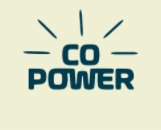As the world moves towards greener energy initiatives, it seems the days of picking a power provider based only on price may soon be behind us.
While some retailers have already begun to market themselves beyond the grid, spruiking renewable energy sources, carbon neutral offset programs and even collaborations with certain charities, one company has taken it a step further, creating a social enterprise and cooperative power service for Aussies.
Cooperative Power, or CoPower for short, is the latest community-based initiative to enter the market, bringing with it a unique not-for-profit and democratic model.
With a pitch that’s strikingly similar to community-owned retailer Enova Energy, CoPower claims to focus its efforts on benefiting people and the planet, rather than on marketing or pricing.
As a not-for-profit organisation, CoPower claims to donate 100 per cent of the revenue it generates from electricity customers to its main mission of fighting poverty, tackling the climate crisis and supporting communities.
Classified as a ‘cooperative’, CoPower uses a model where all customers are given the opportunity to vote on where the revenue of the business goes each year.
However, unlike other providers which sell electricity to bill-payers, CoPower works with Australian-owned provider, Energy Locals, to deliver power to customers.
Through its partnership with Energy Locals, households signed up to CoPower will have access to wholesale electricity rates on the ‘Local Member’ plan. They can also opt in to GreenPower and carbon neutral options through Energy Locals.
Energy Locals Prices
To give you an idea of what rates you could be paying with CoPower, check out Energy Locals prices in your area below.
Here are the Energy Locals plans on our database for NSW. These are products from a referral partner†. These costs are based on the Ausgrid network in Sydney but prices may vary depending on your circumstances. This comparison assumes general energy usage of 3900kWh/year for a residential customer on a single rate tariff. Please use our comparison tool for a specific comparison in your area. Our database may not cover all deals in your area. As always, check all details of any plan directly with the retailer before making a purchase decision.
Here are the Energy Locals plans on our database for Victoria. These are products from a referral partner†. These costs are based on the Citipower network in Melbourne but prices may vary depending on your circumstances. This comparison assumes general energy usage of 4000kWh/year for a residential customer on a single rate tariff. Please use our comparison tool for a specific comparison in your area. Our database may not cover all deals in your area. As always, check all details of any plan directly with the retailer before making a purchase decision.
Here are the Energy Locals plans on our database for SE QLD. These are products from a referral partner†. These costs are based on the Energex network in Brisbane but prices may vary depending on your circumstances. This comparison assumes general energy usage of 4600kWh/year for a residential customer on a single rate tariff. Please use our comparison tool for a specific comparison in your area. Our database may not cover all deals in your area. As always, check all details of any plan directly with the retailer before making a purchase decision.
Here are the Energy Locals plans on our database for South Australia. These are products from a referral partner†. These costs are based on the SA Power Networks network in Adelaide but prices may vary depending on your circumstances. This comparison assumes general energy usage of 4000kWh/year for a residential customer on a single rate tariff. Please use our comparison tool for a specific comparison in your area. Our database may not cover all deals in your area. As always, check all details of any plan directly with the retailer before making a purchase decision.
Here is the cheapest published deal from Energy Locals currently on our database for Tasmania. This is a product from a referral partner†. These costs are based on a household with an annual electricity usage of 2,947kWh/year for a residential customer on a single rate tariff at a selected postcode in Tasmania, but prices will vary depending on your circumstances. Please use our comparison tool for a specific comparison in your area. Our database may not cover all deals in your area. As always, check all details of any plan directly with the retailer before making a purchase decision.
To learn a little more about the unique structure of a cooperative energy organisation, Canstar Blue spoke to Co-Founder and Chair of CoPower, Godfrey Moase, to gain some insights.
What exactly does it mean to be an ‘enterprise cooperative’?
“Our governance structure is what’s called an enterprise cooperative, which means that we are a cooperative of groups. The formal members who elected the board of the cooperative are other cooperatives like Earth Work, Friends of the Earth Melbourne, unions like the ASU, United Workers Union and so on. Under our rules we also have customer members who, not always, but are often members of those other member organisations.
“Customer members are supposed to have representation under our rules, and the way that we started doing that is – everything that we collect from electricity revenue in the co-op – each customer member gets to have an equal say in how that revenue is spent and everyone gets an opportunity to think of ideas about how that works.”
How does CoPower differ from other energy retailers, then?
“Cooperative Power, it’s in the name – it’s a cooperative – and it’s a cooperative that is charged with providing energy to its customer members and therefore it means that it has to be run on the basis of member benefit. It’s non-profit under its own rules, so it’s not allowed to pay dividends to people, it has to reinvest surplus to meet the objects and purposes of the cooperative.”
So, where does CoPower’s revenue go?

“We are putting 10% of our revenue to investments in solar PV and that is going through the energy innovation cooperative, Southern Community-Owned Renewable Energy Fund – they call it Southern Core Fund. What that fund does is give interest-free loans to community groups in the Gippsland and La Trobe Valley areas, so that the local footy club can get solar panels or an artist collective or a community centre, so it builds that collective energy infrastructure in that broader community and so 10% of our revenue just goes there every quarter.
“Another 10% of our revenue goes to International Climate Justice through Union Aid of Border Feeder, they run education and training programs in Nepal and the Philippines for workers who are on the frontlines of the climate crisis to help them with their occupational health and safety rights, make sense of what’s happening with the climate crisis and then be able to respond to that.
“25% off our revenue goes to subsidising the bills of low and no-income people and households, and it is something our members voted and proposed for, which came out of what we did with COVID-19 from 1 April 2020, and we had what was called a ‘solidarity credit’, where people could say, I’m fine and I’ve got work or people could say, I’m not fine, and then our revenue would just transfer between those people, so everyone could keep the lights on during 2020 – well that’s now become our 25% program, and where that’s going this year is to low wage and often times no-wage, farm workers in particular. Farm workers who are temporary migrants or don’t have a visa or have insecure both migration and works statuses often live in large households, they are able to access that program. The overlay with those farm workers is they’re often from Pacific Nations that are vulnerable to climate change themselves so it’s domestic solidarity but also an element of international solidarity.”
If someone was looking for a more environmentally and socially-conscious provider, but weren’t sure about joining a cooperative, what would CoPower tell them?
“Chances are you’ve just found out that ownership matters. And here is a response where it is community and socially owned and it can never be anything else. It will never have enough value, even if it gets really big, because it is non-profit, under its own rules, and there’s a thick layer of different community and public owners of this, we’ll never be able to sell out to corporate, let alone worry about that. If you’ve found out that ownership matters then if you go to another corporate, that’s always a thing that’s gonna happen.
“The key is we’re not pretending that the electrons people access is better in any way, shape or form, and therefore we’re not saying this is the fix. What we’re saying with CoPower is this is a way for use to have power together and fix things and that’s the nuance.”
How does a customer sign up to CoPower? If Energy Locals retails your electricity, does that mean I have to sign up to it first?

“From a customer member point of view, they just come through the Cooperative Power website, find out all the details and they can use our website to go get a quote and switch. Energy Locals is the licensed electricity retailer so they will make sure that bills come on time and that the wholesale power’s been purchased and everything else that flows from that. I think the key benefit, really, is this, and that is – a bunch of money that is normal in retailing, that would otherwise just go on sales and marketing – our customer members get to have a voice in composing ideas and voting ideas on how that money is allocated in order to meet our objects and purposes.
“There is no extra cost to consumers (to join CoPower). We are running on the proposition that human nature is fundamentally good and if people find out about us, they’ll wanna do that and the more and more people that come in, it will be a trickle and then a little stream and then a raving torrent that will fundamentally reshape the entire energy system.”
CoPower is available to residents in Victoria, New South Wales, South Australia, south-east Queensland and Tasmania. For more information on how to sign up or to get a personalised quote, head to the CoPower website.
Image credit: BAZA Production/Shutterstock.com


Share this article